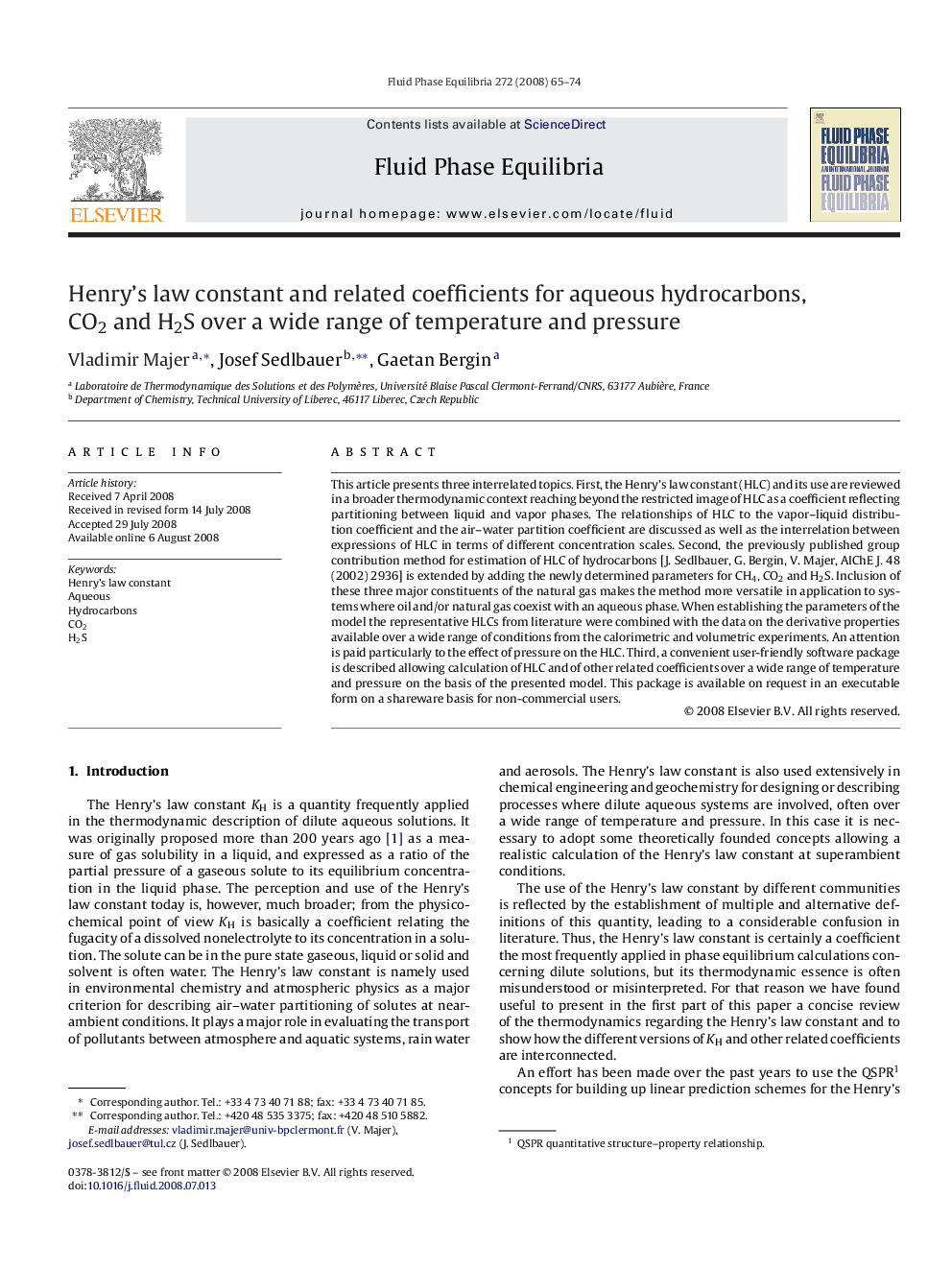| Article ID | Journal | Published Year | Pages | File Type |
|---|---|---|---|---|
| 203547 | Fluid Phase Equilibria | 2008 | 10 Pages |
This article presents three interrelated topics. First, the Henry's law constant (HLC) and its use are reviewed in a broader thermodynamic context reaching beyond the restricted image of HLC as a coefficient reflecting partitioning between liquid and vapor phases. The relationships of HLC to the vapor–liquid distribution coefficient and the air–water partition coefficient are discussed as well as the interrelation between expressions of HLC in terms of different concentration scales. Second, the previously published group contribution method for estimation of HLC of hydrocarbons [J. Sedlbauer, G. Bergin, V. Majer, AIChE J. 48 (2002) 2936] is extended by adding the newly determined parameters for CH4, CO2 and H2S. Inclusion of these three major constituents of the natural gas makes the method more versatile in application to systems where oil and/or natural gas coexist with an aqueous phase. When establishing the parameters of the model the representative HLCs from literature were combined with the data on the derivative properties available over a wide range of conditions from the calorimetric and volumetric experiments. An attention is paid particularly to the effect of pressure on the HLC. Third, a convenient user-friendly software package is described allowing calculation of HLC and of other related coefficients over a wide range of temperature and pressure on the basis of the presented model. This package is available on request in an executable form on a shareware basis for non-commercial users.
